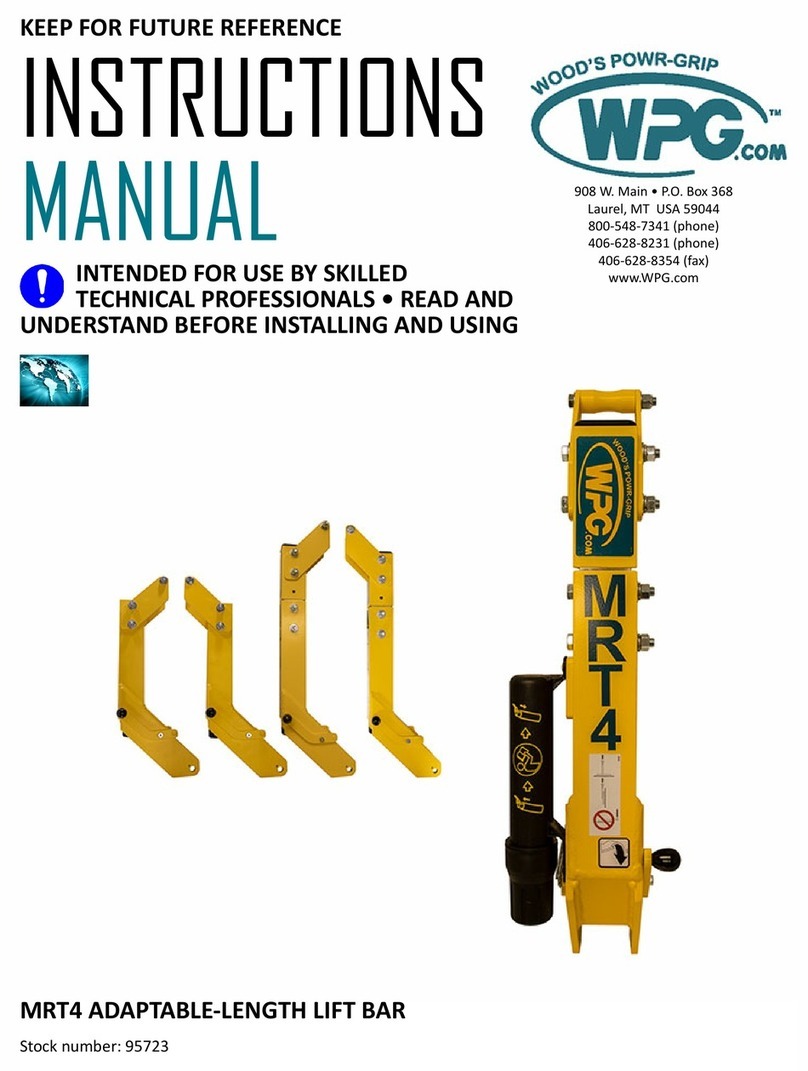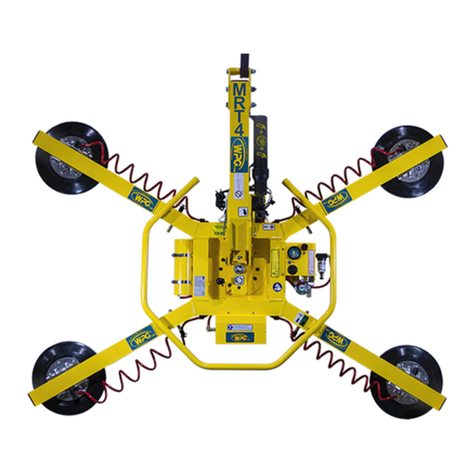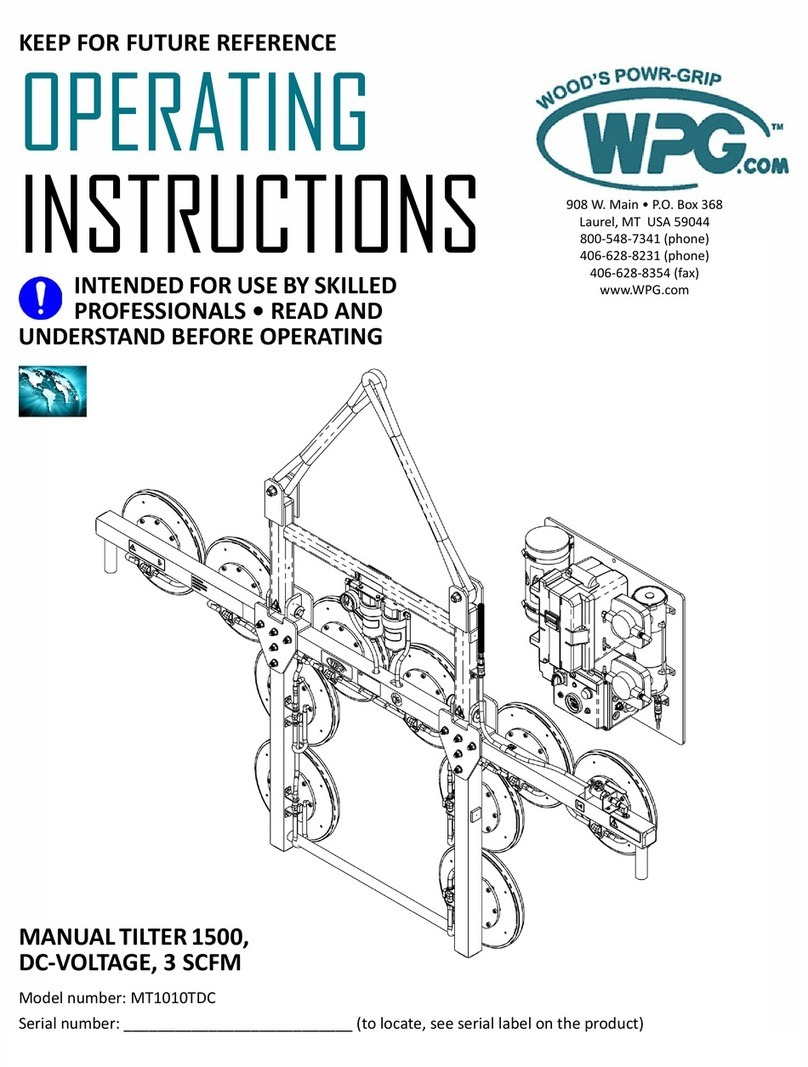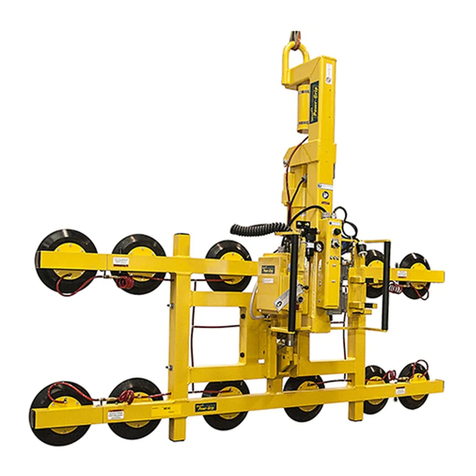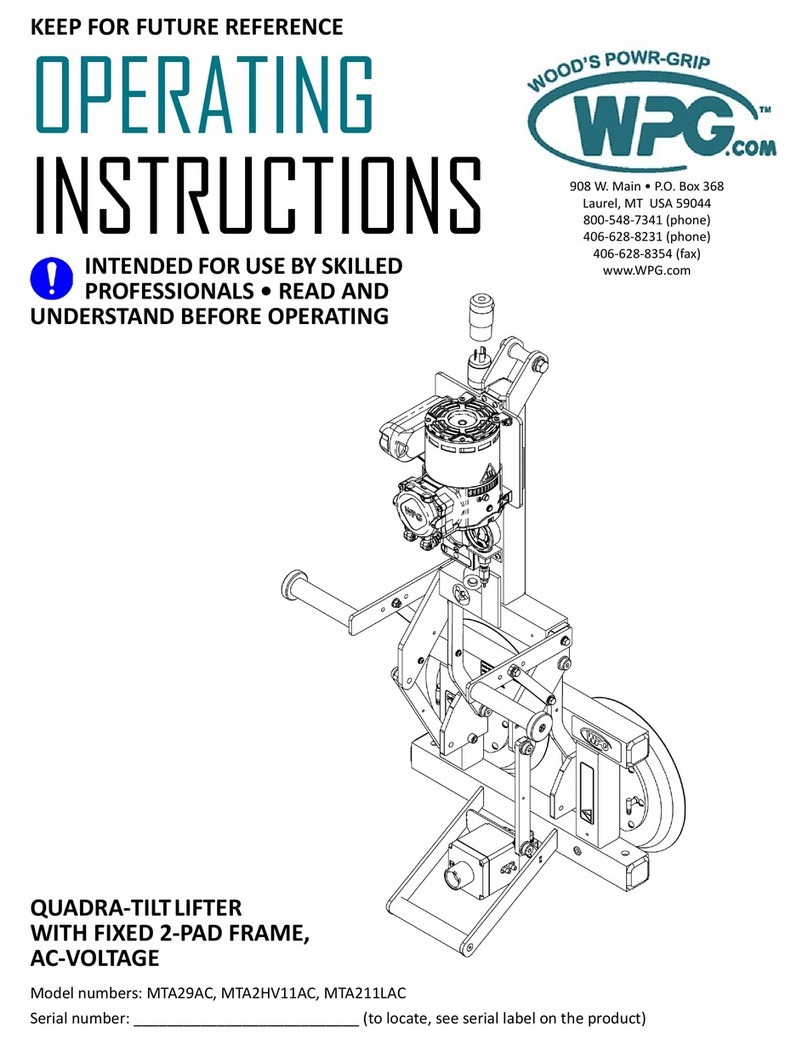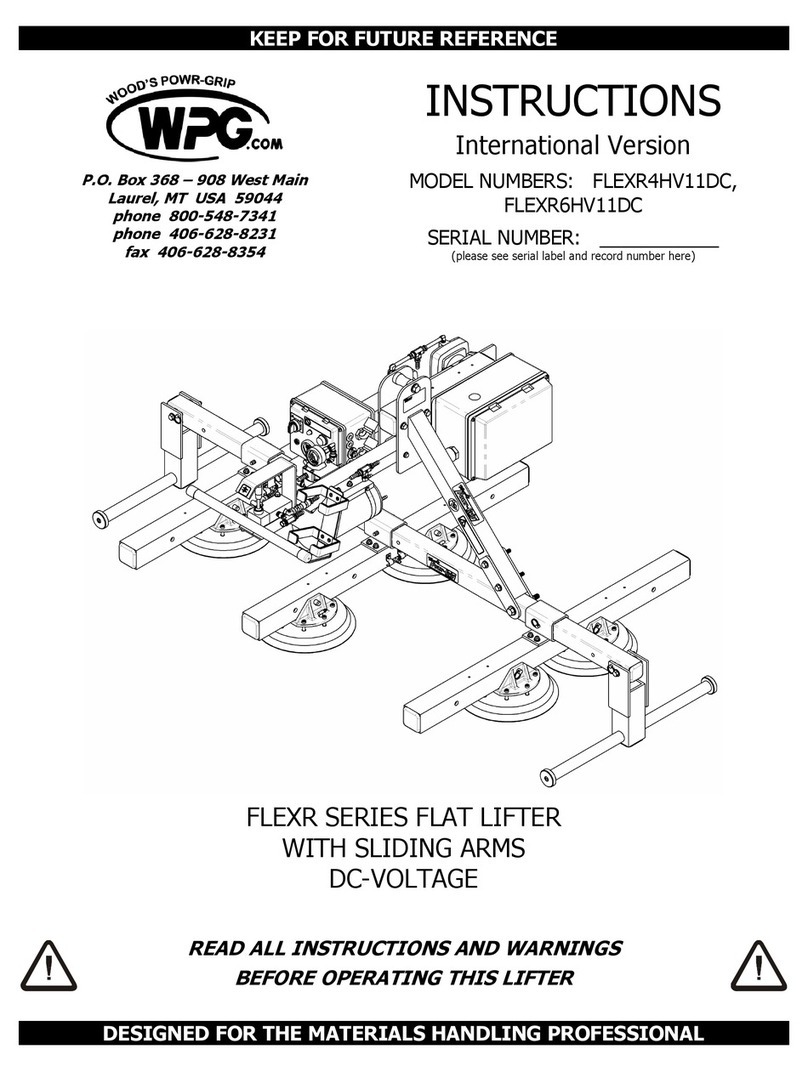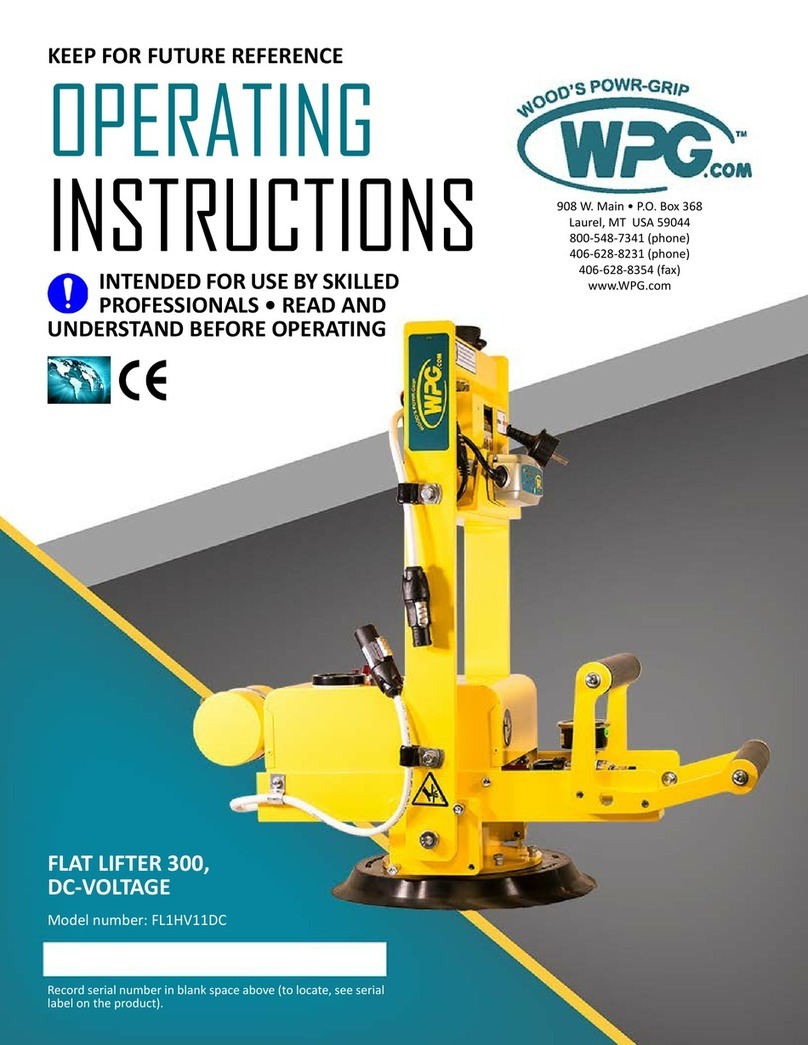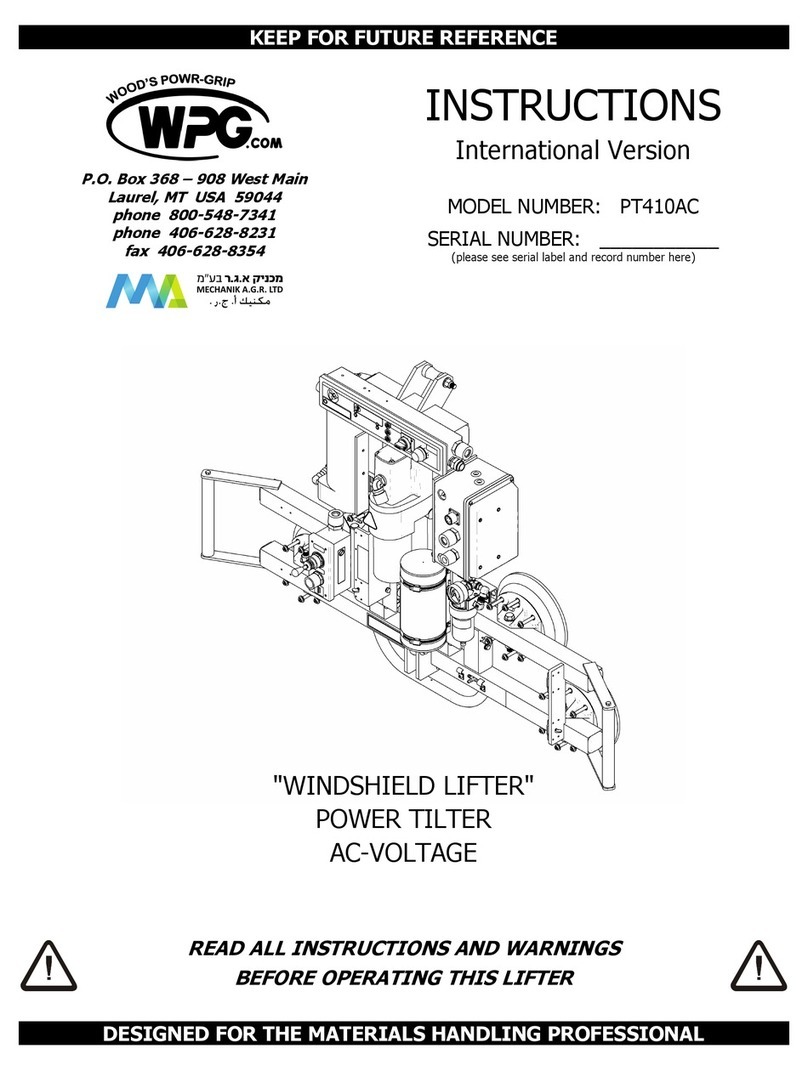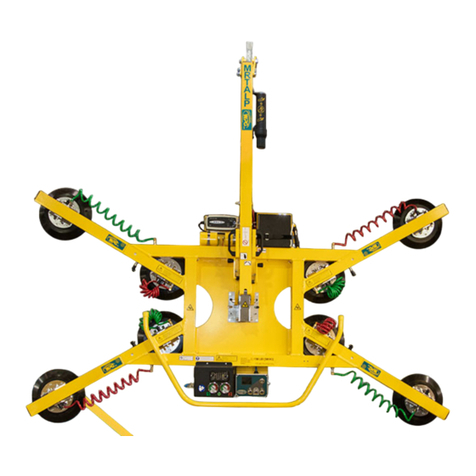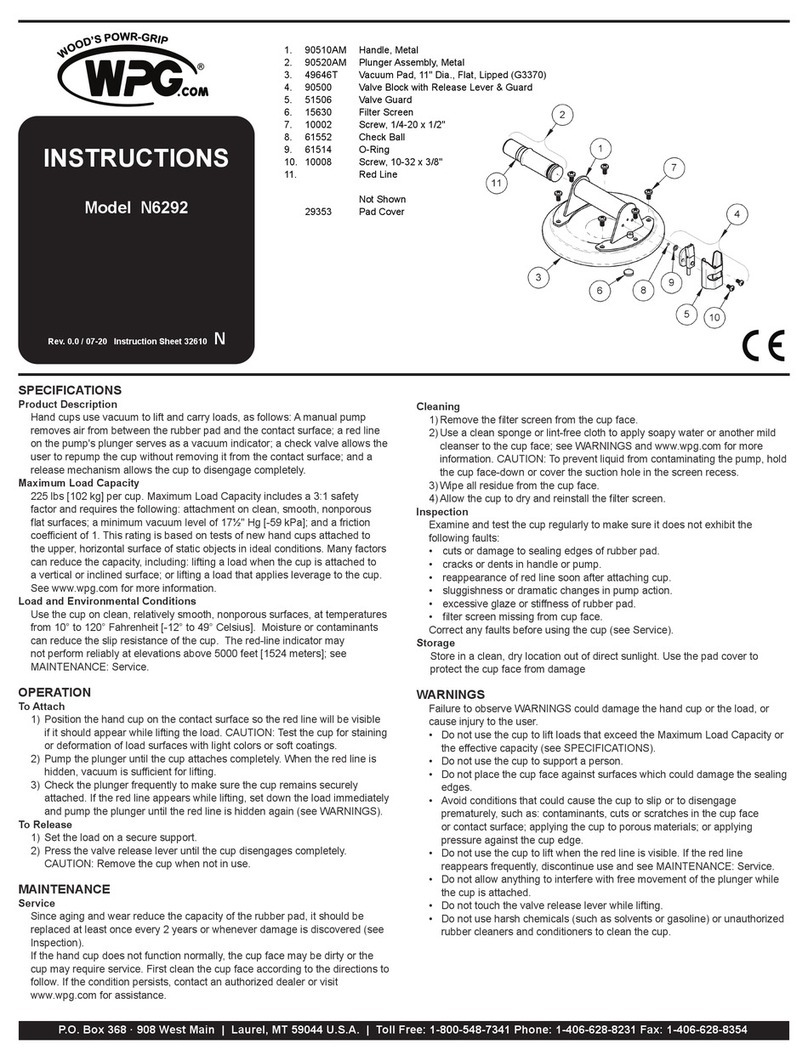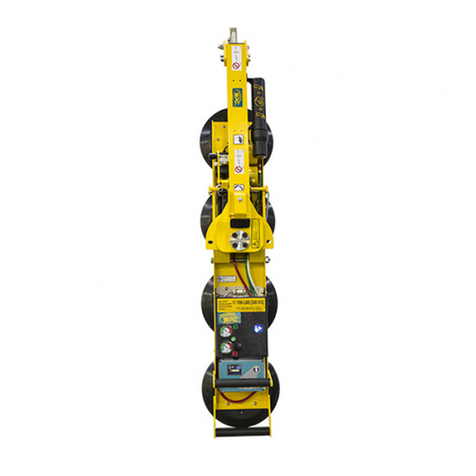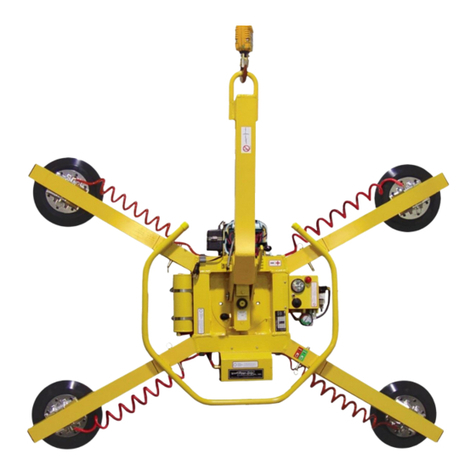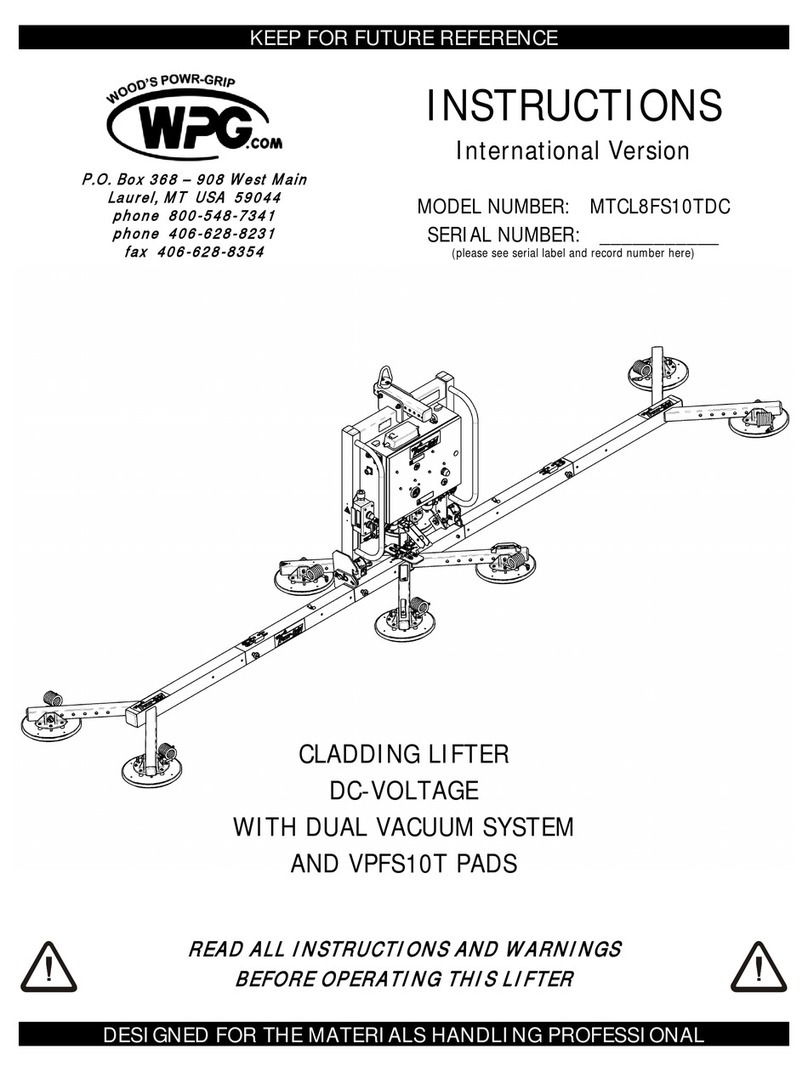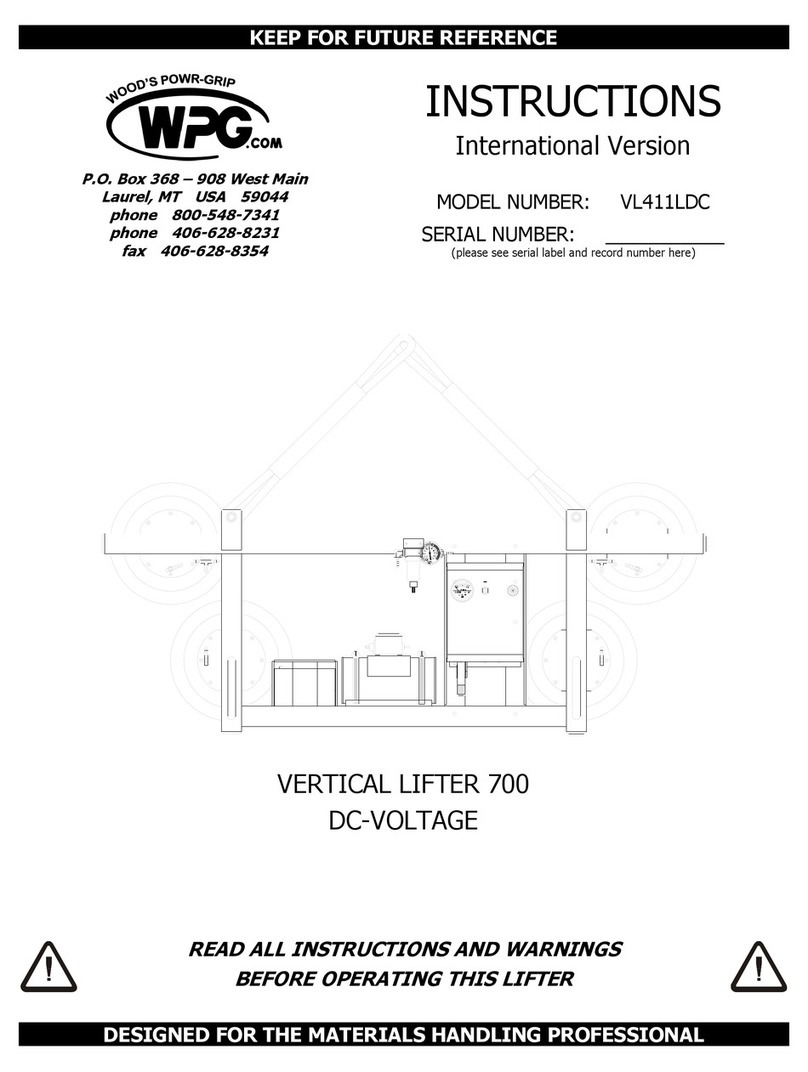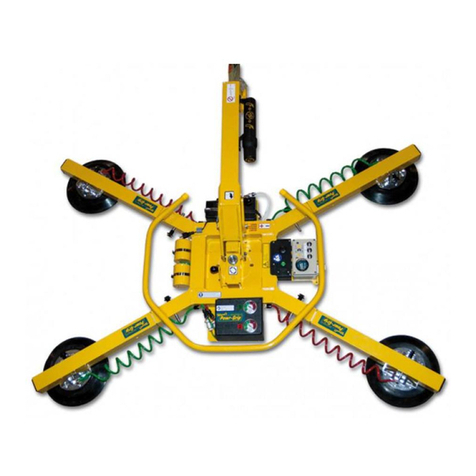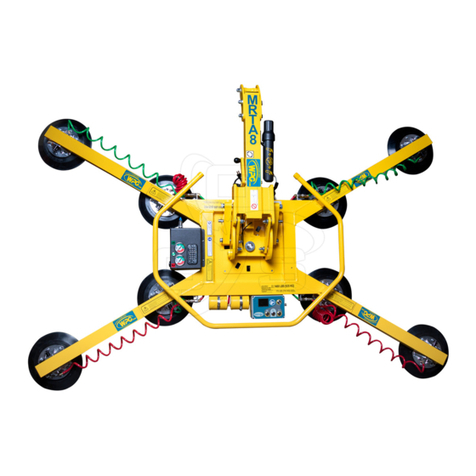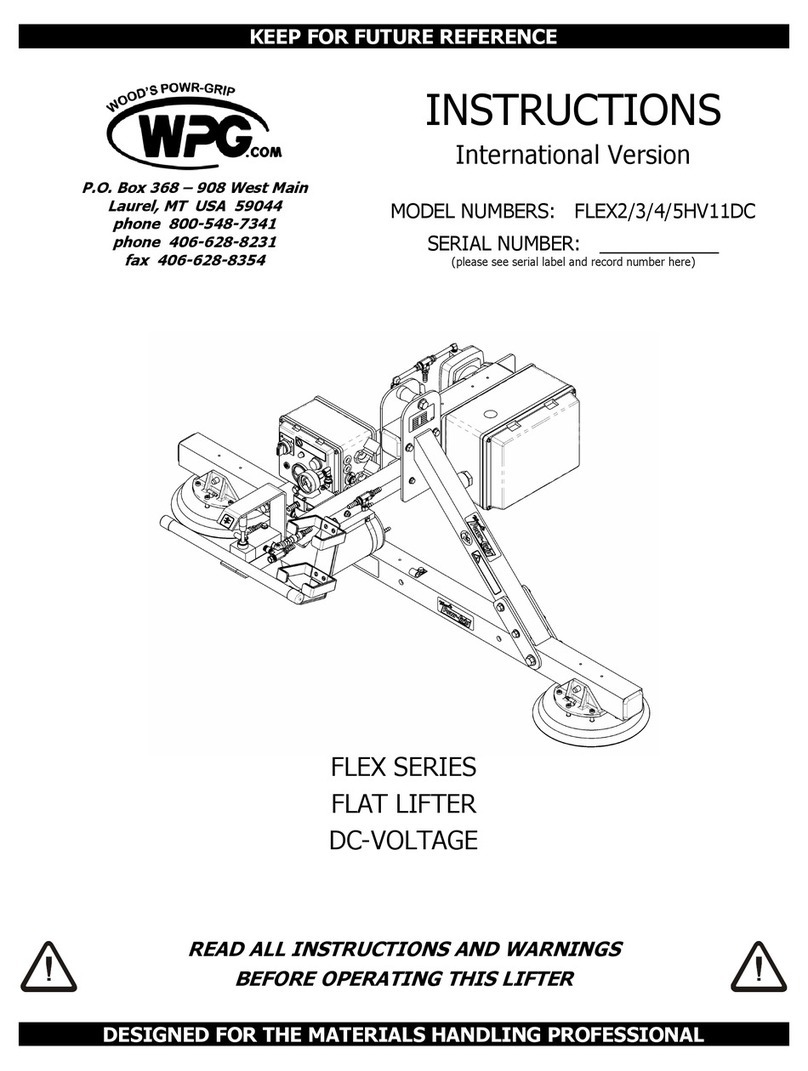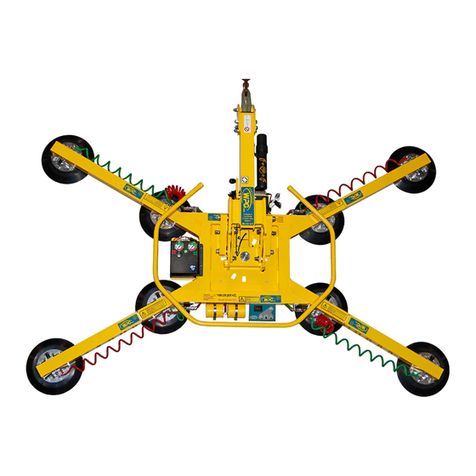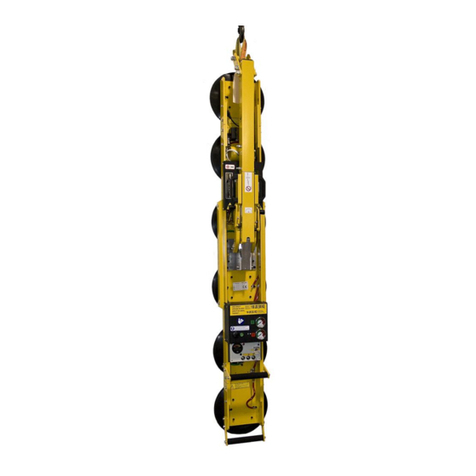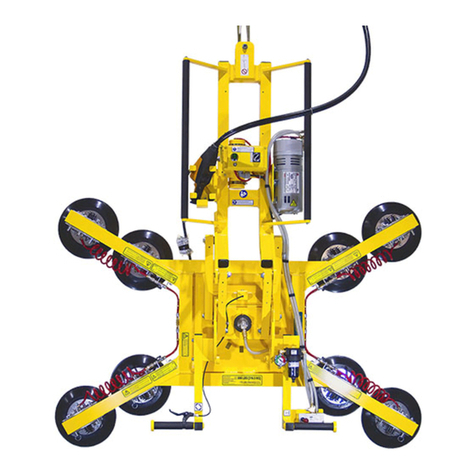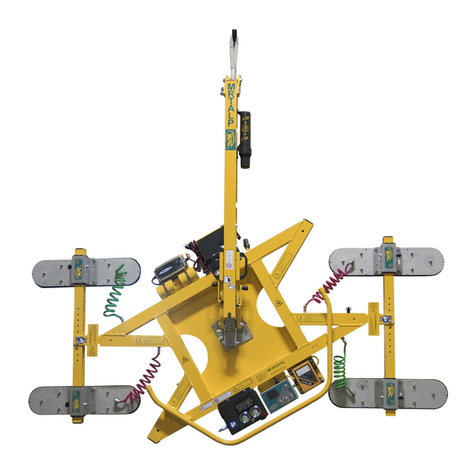
Rev 4.0/8-17 1 N4950/N10TAIR: #35105
TABLE OF CONTENTS
SPECIFICATIONS............................................................................................................ 2
WARNINGS ..................................................................................................................... 3
OPERATING FEATURES................................................................................................... 4
ASSEMBLY....................................................................................................................... 5
INTENDED USE ............................................................................................................... 6
LOAD CHARACTERISTICS ............................................................................................................. 6
OPERATING ENVIRONMENT .........................................................................................................7
DISPOSAL OF THE HAND CUP .......................................................................................................7
OPERATION .................................................................................................................... 8
BEFORE USING THE HAND CUP.....................................................................................................8
Taking Safety Precautions ............................................................................................................................8
TO ATTACH THE HAND CUP TO A LOAD........................................................................................... 8
TO LIFT AND MOVE THE LOAD ......................................................................................................9
About the Red-Line Vacuum Indicator ...........................................................................................................9
Lifting the Load ...........................................................................................................................................9
Monitoring the Red-Line Vacuum Indicator ....................................................................................................9
In Case of Power Failure ..............................................................................................................................9
TO RELEASE THE HAND CUP FROM THE LOAD ................................................................................ 10
AFTER USING THE HAND CUP.....................................................................................................10
MAINTENANCE.............................................................................................................. 11
INSPECTION SCHEDULE.............................................................................................................11
Every-Lift Inspection ..................................................................................................................................11
Frequent Inspection ...................................................................................................................................11
Periodic Inspection ....................................................................................................................................11
Infrequent Use ..........................................................................................................................................11
TESTING SCHEDULE..................................................................................................................12
MAINTENANCE SCHEDULE .........................................................................................................12
VACUUM PAD MAINTENANCE ..................................................................................................... 12
Friction Coefficient .....................................................................................................................................12
Pad Inspection...........................................................................................................................................12
Pad Cleaning .............................................................................................................................................13
TO REPLACE SEALING RING INSERT IN VPFS10T PADS.................................................................14
REPLACEMENT PARTS LIST .......................................................................................... 15
LIMITED WARRANTY.................................................................................................... 16












